Let’s talk about capacitors first. We all say that large capacitors have good low-frequency characteristics, and small capacitors have good high-frequency characteristics. Then according to the size of capacitive reactance and capacitance C and frequency F are inversely proportional, is a large capacitor not only good low-frequency characteristics, but also high The frequency characteristic is better, because the higher the frequency, the larger the capacity, and the lower the capacitive reactance. Is the high frequency easier to pass through the large capacitor, but from the perspective of the slow charging and discharging speed of the large capacitor, the high frequency seems to be different It's not easy to pass. Isn't this contradictory?
First of all, high frequency and low frequency are relative. If the frequency is too high, then it does not make sense to increase the capacitance of the capacitor, because, as everyone knows, the coil is an inductance, which blocks high frequencies. The higher the frequency, the greater the hindrance. Although the inductance is small, large-capacity capacitors generally have longer pins and larger plate circles. At this time, the equivalent inductance of the capacitor's two pins has greatly hindered high frequencies. Worked.
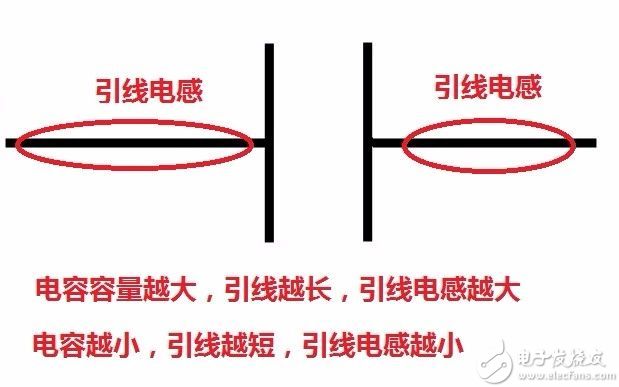
Therefore, it is not easy for high frequency to pass through large-capacity electrolytic capacitors with poor high-frequency performance, and chip ceramic capacitors have an advantage in price performance.
In the same way, is it possible that the greater the inductance, the greater the hindrance to the high frequency? It's not. In order to obtain a larger inductance, there must be as many and as large coils as possible, and these conductors are connected to the countless plates of the capacitor. If it happens that the distance between these plates is relatively close (this is the pursuit of multiple turns. Avoided), distributed capacitance will provide a path for high-frequency signals.
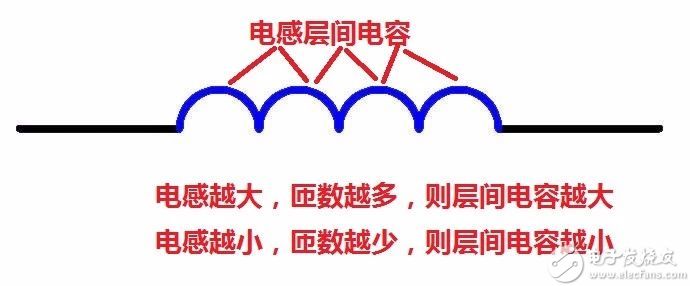
Therefore, for signals of different frequency bands, capacitors and inductors of appropriate capacity should be selected.
Let's analyze the high-frequency equivalent circuits of the three most commonly used passive components, resistors, capacitors, and inductors:
1. High frequency resistance
The most common circuit element in low-frequency electronics is the resistor, which functions to achieve the purpose of voltage reduction by converting some electrical energy into heat energy. The high-frequency equivalent circuit of the resistor is shown in the figure. The two inductors L simulate the parasitic inductance of the leads at both ends of the resistor. At the same time, the capacitance effect must be considered based on the actual lead structure; the capacitor C is used to simulate the charge separation effect.
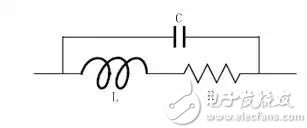
According to the equivalent circuit diagram of the resistor, the impedance of the entire resistor can be easily calculated:

The following figure depicts the relationship between the absolute value of the impedance of the resistor and the frequency. As you can see, the impedance of the resistor is R at low frequencies. However, when the frequency rises and exceeds a certain value, the influence of parasitic capacitance becomes the main one, which causes The resistance of the resistance drops. When the frequency continues to increase, due to the influence of the lead inductance, the total impedance rises, and the lead inductance represents an open circuit or infinite impedance at a very high frequency.
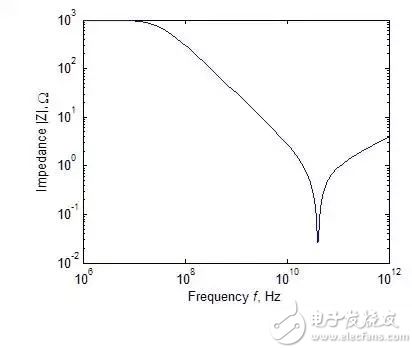
2. High frequency capacitor
Chip capacitors are widely used in radio frequency circuits. They can be used in many circuits such as filter frequency modulation, matching networks, and transistor bias. Therefore, it is necessary to understand their high-frequency characteristics. The high-frequency equivalent circuit of the capacitor is shown in the figure, where L is the parasitic inductance of the lead; a series equivalent resistance R1 is used to describe the lead conductor loss; a parallel resistance R2 is used to describe the dielectric loss.
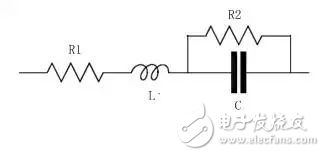
The relationship between the absolute value of the impedance of a typical capacitor and the frequency can also be obtained. As shown in the figure below, due to the dielectric loss and finite lead length, the capacitor shows the same resonance characteristics as the resistor.
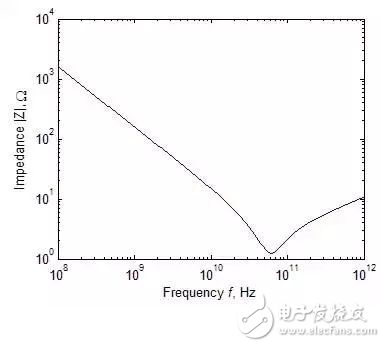
3. High frequency inductance
Inductance has fewer applications than resistors and capacitors. It is mainly used in transistor bias networks or filters. Inductance is usually made of a wire wound on a round conductor column, so in addition to considering its own inductive characteristics, the inductance also needs to consider the resistance of the wire and the distributed capacitance between adjacent coils. The equivalent circuit model of the inductance is shown in the figure below. The parasitic bypass capacitor C and series resistance R are the combined effects of distributed capacitance and resistance, respectively.
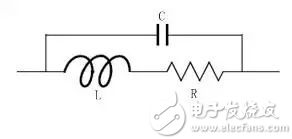
Like resistance and capacitance, the high-frequency characteristics of inductors are also different from the expected characteristics of ideal inductors, as shown in the following figure: First, when the frequency is close to the resonance point, the impedance of the high-frequency inductor increases rapidly; second, when the frequency continues to increase , The influence of parasitic capacitance C becomes the main one, and the coil impedance gradually decreases.
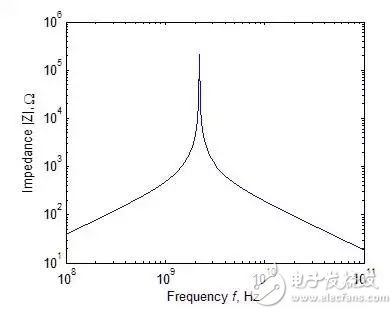
In a word, in high-frequency circuits, the performance of wires together with basic passive components such as resistance, capacitance and inductance is obviously different from the characteristics of ideal components. Readers can find that the constant resistance value at low frequency shows a second-order system response with resonance point at high frequency; at high frequency, the dielectric in the capacitor produces loss, causing the impedance characteristic of the capacitor to appear only at low frequency. The frequency is inversely proportional; at low frequencies, the impedance response of the inductor increases linearly with the increase in frequency, before reaching the resonance point, it starts to deviate from the ideal characteristics, and finally becomes capacitive. The high-frequency characteristics of these passive components can be described by the aforementioned quality factor. For capacitors and inductors, for the purpose of tuning, it is usually desirable to have the highest possible quality factor.
Rf Coaxial Cable,Digital Coaxial Cable,Coaxial Cable For Internet,Coaxial Cable Types
Zhejiang Wanma Tianyi Communication Wire & Cable Co., Ltd. , https://www.zjwmty.com